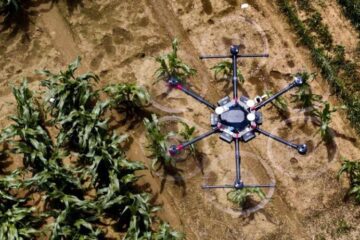UAlberta medical researchers discover how immune system kills healthy cells

Medical scientists at the University of Alberta have made a key discovery about how the immune system kills healthy cells while attacking infections. This finding could one day lead to better solutions for cancer and anti-viral treatments.
Faculty of Medicine & Dentistry researcher Colin Anderson recently published his team's findings in the peer-reviewed journal, Journal of Immunology. His team included colleagues from the United States and the Netherlands, and graduate students from the U of A.
Previous research has shown that when the immune system launches an aggressive attack on infected cells, healthy tissues and cells can be killed or damaged in the process. Anderson and his team discovered the mechanisms in the immune system that cause this “overkill” response.
“This opens the opportunity that one might be able to manipulate the immune system response to block collateral damage without blocking the killing of infected cells,” Anderson explained.
“In the future this might be important in the development of clinical treatments in cases where the immune system response needs to be harnessed. For example, in treating various viral infections, the collateral damage caused during the immune system attack is a large part of the illness.
“In other cases, such as cancer or tumour treatments, one may want to increase the immune system's ability to kill collateral cells, in hopes of killing tumour cells that would otherwise escape during treatment and spread elsewhere in the body. Our research suggests there are other mechanisms that could improve cancer therapy and make it more efficacious. This finding could also help us understand why certain cancer treatments are more successful than others.”
Anderson's team discovered “the weaponry the immune system uses to try and kill an infected or cancerous cell is not exactly the same as the weaponry that causes collateral damage to innocent bystander cells that aren't infected.” For years, it was assumed the weaponry to kill infected cells versus healthy cells was exactly the same.
The research group is continuing the work in this area to see if they can indeed alter the level of collateral damage to healthy cells without altering the attack on infected cells.
Anderson is a researcher in the Department of Surgery and the Department of Medical Microbiology and Immunology. He is also a member of both the Alberta Diabetes Institute and the Alberta Transplant Institute.
The research was funded by the Canadian Institutes of Health Research.
Media Contact
More Information:
http://www.ualberta.caAll latest news from the category: Life Sciences and Chemistry
Articles and reports from the Life Sciences and chemistry area deal with applied and basic research into modern biology, chemistry and human medicine.
Valuable information can be found on a range of life sciences fields including bacteriology, biochemistry, bionics, bioinformatics, biophysics, biotechnology, genetics, geobotany, human biology, marine biology, microbiology, molecular biology, cellular biology, zoology, bioinorganic chemistry, microchemistry and environmental chemistry.
Newest articles

AI to Make Crop Production More Sustainable
Drones monitoring fields for weeds and robots targeting and treating crop diseases may sound like science fiction but is actually happening already, at least on some experimental farms. Researchers from…

Cruise Ship as Data Collector
New Approaches in Ocean Observation… Scientific research – not only confined to dedicated research vessels but also from non-scientific vessels and marine infrastructures. This is one of the ideas promoted…

Experiment opens door for millions of qubits on one chip
Researchers from the University of Basel and the NCCR SPIN have achieved the first controllable interaction between two hole spin qubits in a conventional silicon transistor. The breakthrough opens up…





















